Greenhill Road apartment towers bid demolished
A plan by South Australia’s teachers’ union to build more than 200 rental apartments at Parkside has been rejected over concerns about building height and “unreasonable overshadowing” of nearby homes.

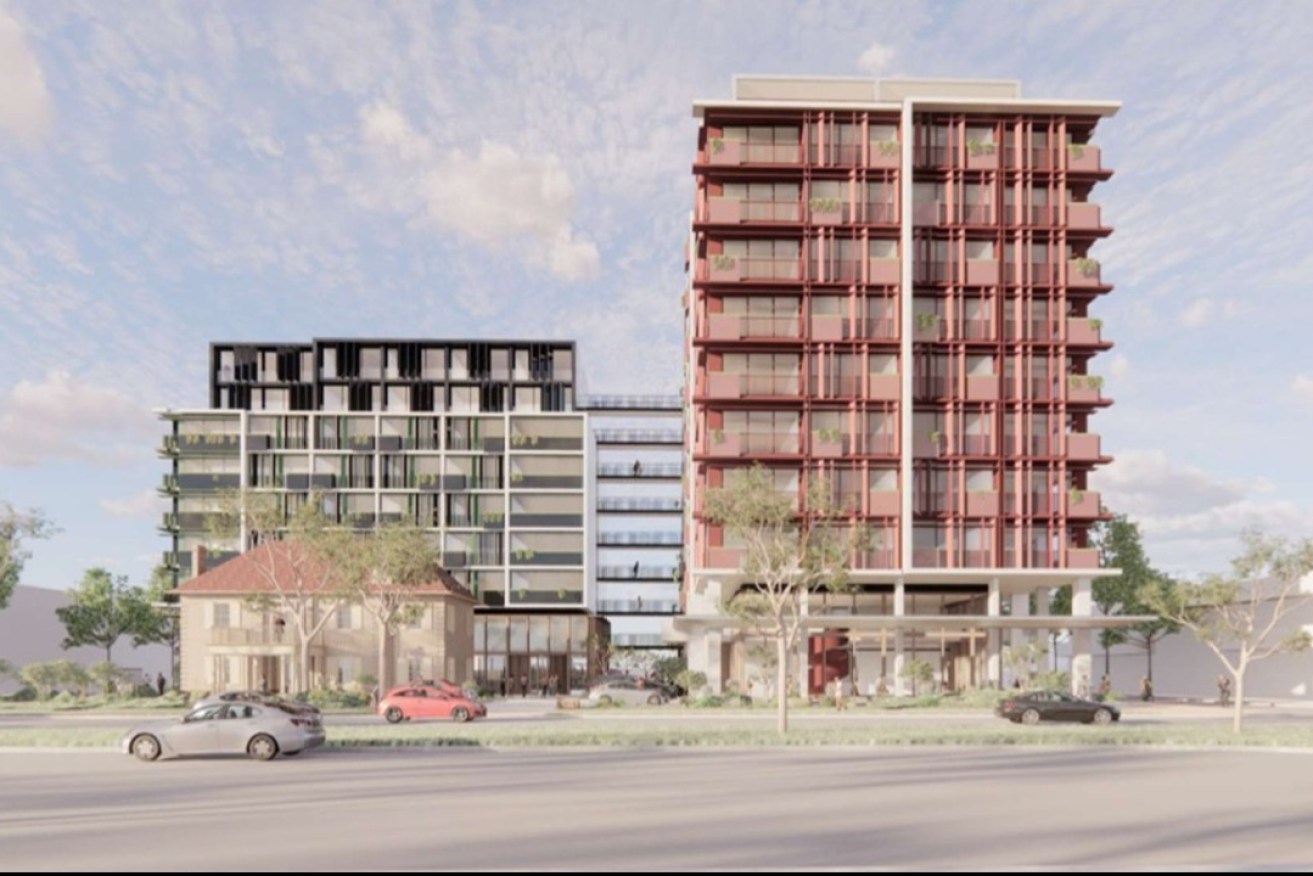
An image of the rejected plans for 9 and 11-storey apartment towers at the Australian Education Union SA branch site on Greenhill Road, Parkside. Image: nettletontribe architects
The Australian Education Union (AEU) SA branch lodged plans earlier this year to build two apartment towers – 11 and nine storeys respectively – to replace its existing headquarters at 163A-164 Greenhill Road and 3 Porter Street, Parkside.
The towers would have included 224 “build to rent” apartments with priority space for AEU members and key workers.
The 11-storey apartment building was to be located on the western corner of Greenhill Road and Porter Street at 37.2 metres tall, sloping down to two-storeys at its rear to match the height of residential homes behind.
The nine-storey apartment building was intended for the eastern part of the site behind the local heritage listed Meaghey House. It was to be 30 metres tall and incorporate a two-storey rear office extension along with seven levels of apartment space.
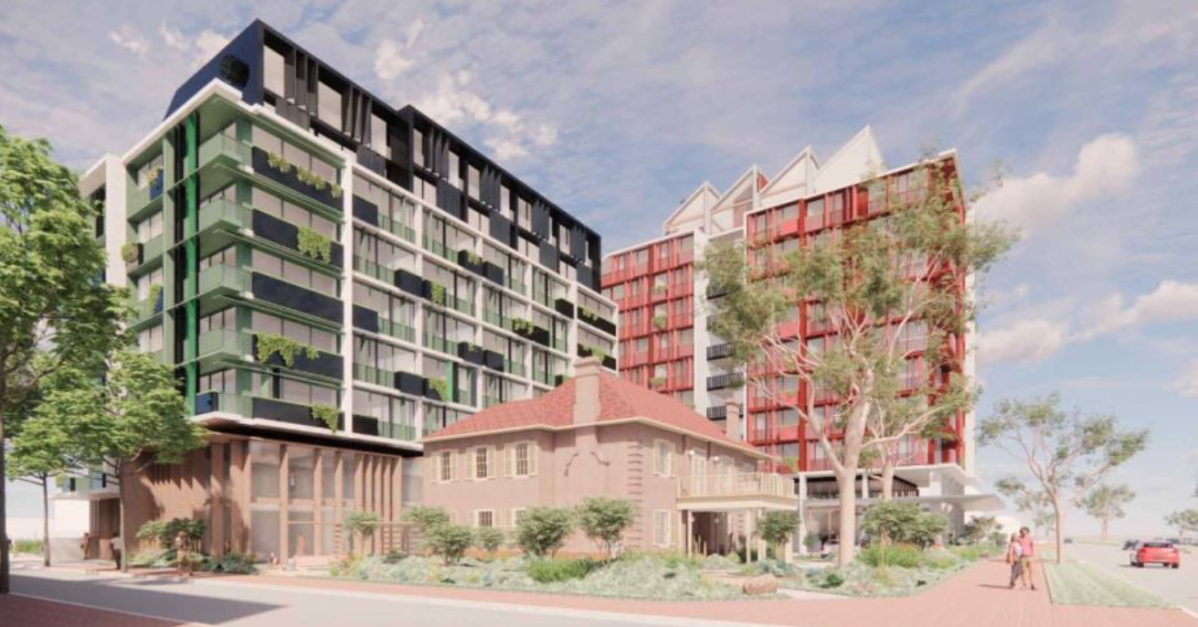
A view of the proposed site looking west towards the local heritage listed Meaghey House. Image: nettletontribe architects
But the State Commission Assessment Panel (SCAP) on Wednesday refused to grant the AEU planning consent, finding the project did not “positively respond to the local context” nor meet many of the performance outcomes required for development along an urban corridor.
The SCAP listed 10 reasons for its decision, including that the development did not qualify to exceed the zone’s height limit.
“The development does not satisfactorily mitigate the impacts of building massing on residential development within the Established Neighbourhood Zone,” the SCAP ruled.
“The development does not adequately minimise and manage off site impacts, nor achieve a high level of design quality as a result of exceeding the height incentive.”
The SCAP also found the visual mass of the development would have been “prominent when viewed from adjoining allotments and public streets” and the proposed building height and massing “does not contribute positively to the character of the local area”.
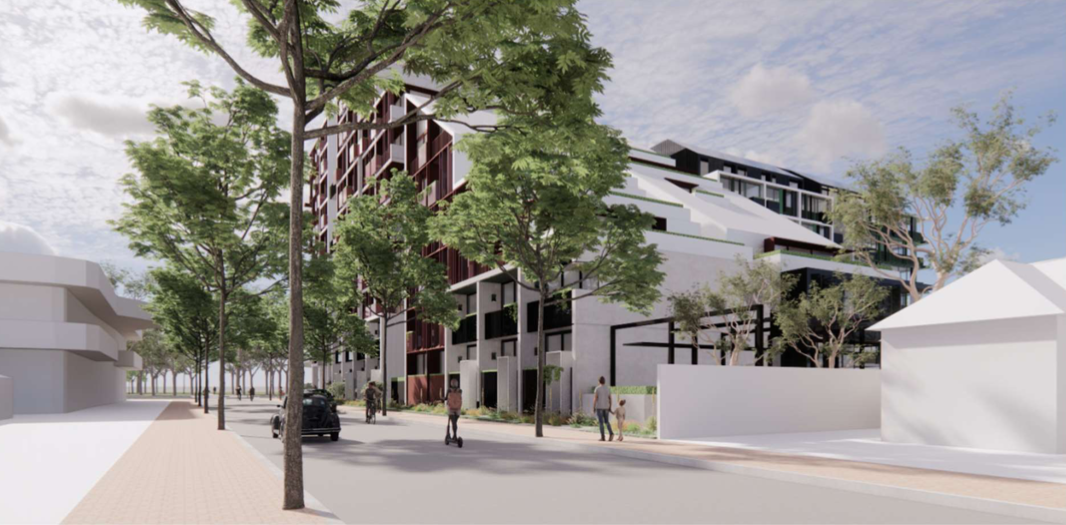
A view of the “step down” design of the 11-storey building along Porter Street. Image: nettletontribe architects
The development site was classed as a “significant development site” as it is on an allotment greater than 5000 square metres, meaning it is granted a 30 per cent “bonus” height incentive under the planning code.
This uplifted the zoning for the area from seven levels, 25.5 metres to nine-levels, 33 metres.
The AEU’s 37.2-metre, 11-storey proposal still slightly exceeded this limit, with the SCAP ultimately finding it would lead to “unreasonable overshadowing to adjoining residential land uses”.
SCAP, an expert body that assesses all developments in the inner-metropolitan area above four storeys, also took issue with the provision of off-street car parking in the proposal.
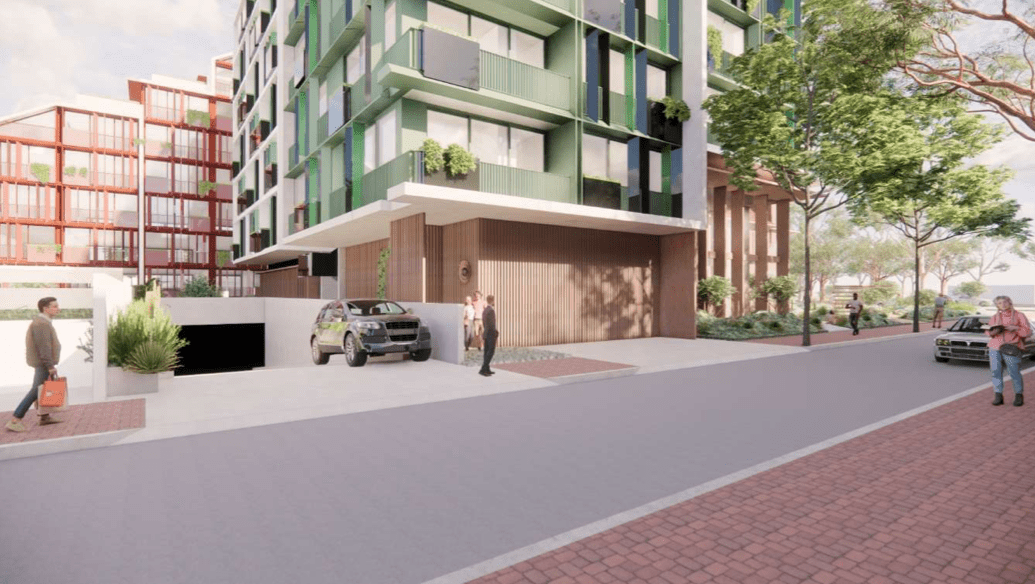
A view of the development from Montpelier Street, looking west. Image: nettletontribe architects
The AEU had proposed incorporating 196 car parks in the development, but representors against the proposal argued it was a shortfall of around 50 parking spaces for a project of that size.
The SCAP agreed with the argument, finding the development would have “[placed] unreasonable demand on on-street parking within the locality”.
Other issues found by the SCAP were poor lighting and ventilation within the apartments and limited private open space for occupants.
The SCAP refused planning consent despite a report from government planning officer Lauren Talbot recommending approval.
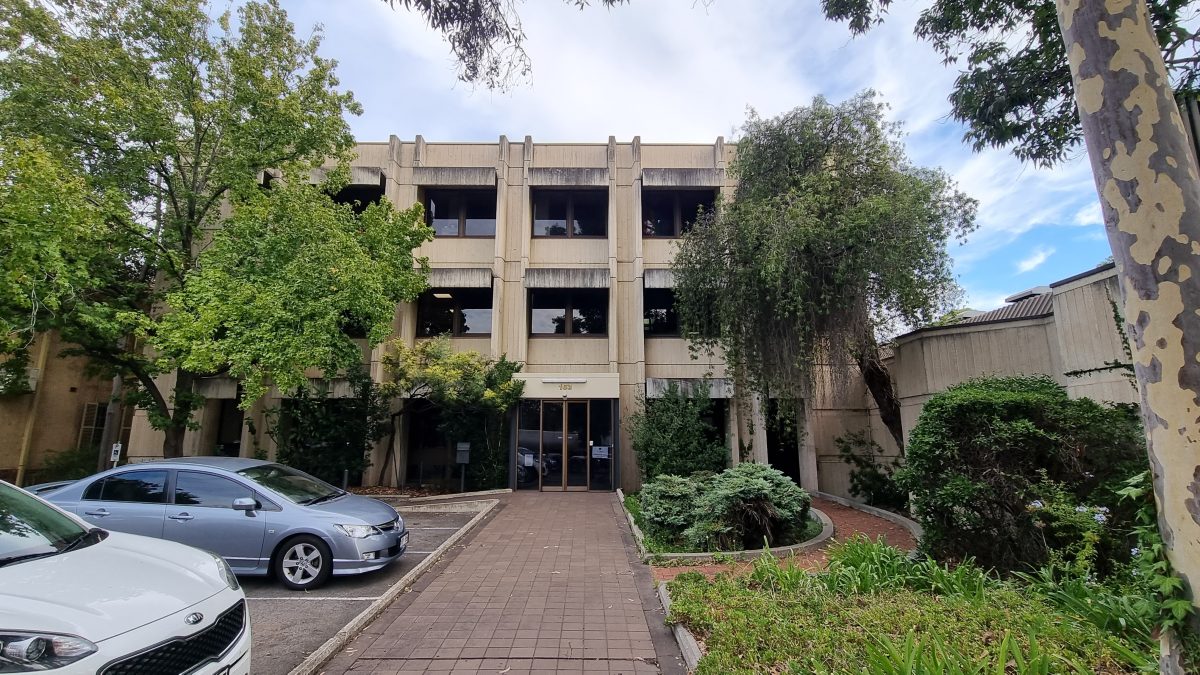
The AEU’s current offices on Greenhill Road were slated for demolition under the plans. Photo: Thomas Kelsall/InDaily
Talbot found the AEU’s proposal was “reasonably consistent with the intent for intense development on Significant Development Sites on a major corridor”.
She said while there were “discrepancies” with the extra height and the shortfall in off-street parking, the project still warranted approval as its location and target demographic were not reliant on car ownership.
“Within the context of the size and location of the site being opposite the Adelaide Parklands open space and in close proximity to the Adelaide CBD, the development is appropriate and warrants Planning Consent,” Talbot wrote.
“Whilst it is noted that Adelaide vehicle usage/ownership is different to that of the eastern States, the development being proposed is not considered to be of a type that typically attracts those who require or prefer individual vehicle ownership.
“Given the size of the apartments and the inner metro location, the assumptions made to justify the shortfall in parking are considered to be sound.”
Talbot also said there were 16 different apartment sizes within the proposal which would “enable the development to respond to a significant demand for rental housing in the locality, within close proximity to employment, services and public transport”.
Most of the apartments in the proposed development were to be one-bedroom along with a small number of studio and two-bedroom apartments.
Ten people made representations to the SCAP on Wednesday, after 82 representations – a majority opposed to the development – were made during the public notification period.
Unley MP David Pisoni said the rejected development was a “monstrosity” and congratulated residents for successfully opposing it.
Unley councillor Luke Doyle, who represents Parkside Ward, opposed the development along with fellow Parkside Ward councillor and transport academic Jennifer Bonham.
Doyle said he opposed the development because of its “sheer scale, mass, height, poor mix of housing, overshadowing, overlooking, inadequate tree canopy, traffic and parking concerns”.
“The Parkside community is not a NIMBY community – we recognise the need for housing, especially in a location such as Greenhill Road,” said Doyle, who said that his views didn’t represent the council’s.
“However, developments should complement the local area, environment and community, not dominate it.
“Trying to squeeze in as many dwellings as possible onto a site will not necessarily lead to good outcomes for residents, or the local community.”
Doyle also criticised the AEU for cutting down a large gum tree at the rear of the property on Thursday before the SCAP announced its decision. The tree was within 10 metres of the AEU’s headquarters and felling was permitted under the current planning code.
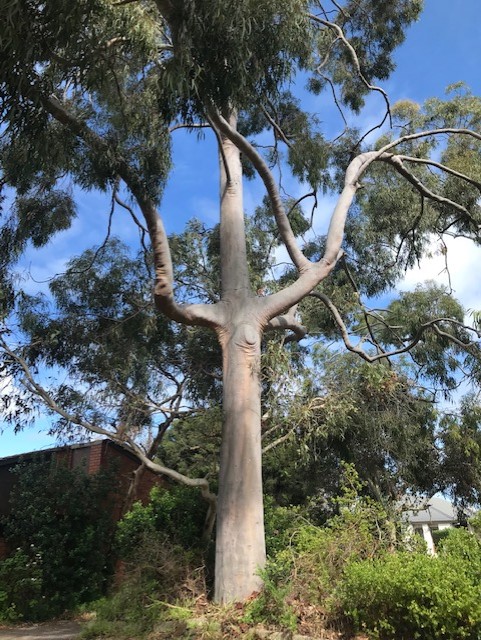
The tree that was removed on the site. Photo: supplied
InDaily contacted AEU SA branch secretary Andrew Gohl for comment but did not receive a response before deadline.
It’s unclear whether the education union will appeal the SCAP’s decision, submit a revised planning application or abandon the proposal entirely.
The SCAP has refused planning approval for two other high-rise developments in the last 12 months.
In October 2022, it knocked back a plan for a 26-storey, 86.5-metre hotel on the corner of Wakefield and Pulteney Street in the eastern CBD.
In April 2023, it also refused planning consent for a 21-storey, 67-metre luxury apartment block on the corner of Rundle Street and East Terrace. That decision is now subject to an appeal in the Environment, Resources and Development Court, as revealed by InDaily on Tuesday.




